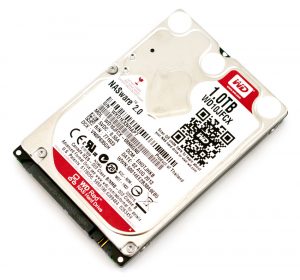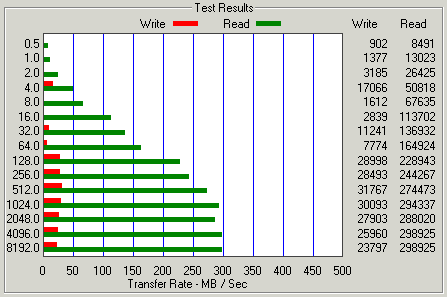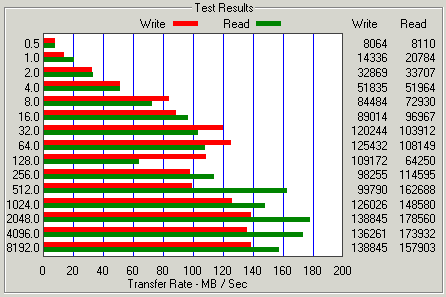 I am setting up a new server, with four 2.5 inch hot swap 1tb WD Red disks – model WD10JFCX. Write performance is key in this setup as 90% of the workload is putting data to disk.
I am setting up a new server, with four 2.5 inch hot swap 1tb WD Red disks – model WD10JFCX. Write performance is key in this setup as 90% of the workload is putting data to disk.
SSD drives would be nice, but not cost effective to get the space needed. I suspect the best option is going to be RAID 10, but lets run a few tests first.
No RAID
Testing with a single drive gives us a max. write speed of 74 MB/Sec and maximum read speed of 113 MB/Sec which is not very impressive.
RAID 5
Next up, a four disk RAID 5 setup – the performance is BAD! You do gain quite a bit of read performance maxing out at just under 300 MB/Sec but the write performance has taken a major hit vs. a single drive coming in at only 31 MB/Sec.
RAID 10
Now lets check out RAID 10, which should be the fastest configuration out of the bunch. The downside is you need at least four hard drives and you loose 50% of your capacity to redundancy.
As expected the performance is about double what we get from a single drive. Maximum write comes in at 138 MB/sec and maximum read is 178 MB/sec. The read did not increase by double, but the performance did improve for sure over a single drive.
If your workflow is mostly read the RAID 5 configuration actually performs better. I suspect the more drives you have in your RAID 5 configuration the faster it would probably get since you have more spinning heads.
For our write intensive workload we will be going with the RAID 10, which is very slow vs. SSD but the cost of SSD would be over $1,000 for the same space. These 1tb WD Red drives we are using currently cost about $75 each. By using RAID 10 we get the fastest write performance and quite a bit of redundancy.



